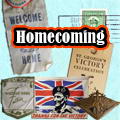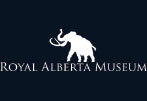Home | Living With War | Social Life
Social Life
The onset of the Second World War had many repercussions for Albertans. One was the creation of well-paying jobs that put cash in their pockets, in some cases for the first time since the onset of the Great Depression in 1929—30. With little in the way of consumer goods available to purchase, Albertans looked to enjoy themselves. Movie theatres, restaurants, dance halls, nightclubs, and canteens flourished during the war. Albertans were also avid sports fans; Edmontonians enjoyed watching baseball games at Renfrew Park and football games at Clarke Stadium while Calgarians watched their team compete at Mewata Stadium.
Dance halls, especially those in rural communities, became very popular in the 1930s. Lethbridge alone had four halls. Local bands played for food and drinks or for free; it was one of the few forms of entertainment Albertans could afford during the Depression years. Dancing was also one of the few acceptable activities in which young men and women could engage together. It could also be a family affair as some halls did not serve alcohol and could admit minors.
For women, especially rural women, dances were an affordable and acceptable distraction from the pressures of raising families and taking care of farms and homes on their own. Contrary to past social conventions, women grew bolder, asking men to dance, or participated in dances among themselves on account of there being fewer local men at such events.
The YMCA offered special dances for military personnel. Alcohol-fuelled violence became a problem at many dance halls: young soldiers on leave from their training bases drank, used foul language, and fought. The reputation of some dance halls became rather tarnished, and earned nicknames like the “Bucket of Blood” and “Gonorrhoea Racetrack.”
Movies—primarily Hollywood productions—were another form of popular entertainment during the war years. Edmonton boasted several new theatres: the Roxy, Varscona, Garneau, and Odeon. Openings for popular movies such as Gone with the Wind (1939), Citizen Kane (1941), and Casablanca (1942) drew large crowds. American war movies tended to be highly patriotic and xenophobic, depicting Germans as "Krauts" and Japanese as "Japs". Animated children’s movies produced by Disney and other companies were largely war propaganda.
Early on in the war, movies tended to be more light hearted. Comedies such as Buck Privates (1941), starring Abbott and Costello, and Caught in the Draft (1941) with Bob Hope poked fun at army life, while other pictures such as Yankee Doodle Dandy (1942) celebrated American life, its ideals, and freedom.
As the war dragged on, producers and directors started making movies with plots and themes involving spies, conspirators, and saboteurs; these included The Conspirators (1944) and the Hitchcock classic, Foreign Correspondent (1940). Following the Japanese attack on Pearl Harbor, movies took on decidedly darker themes and tones; Bataan (1943), Thirty Seconds over Tokyo (1944), and The Fighting Sullivans (1944) told of the sacrifices of heroic American soldiers fighting for freedom and liberty against the villainous and inhuman Japanese.
Although American movies dominated theatre screens, Canadian films (mostly documentaries) made by the National Film Board (NFB) were important in informing Canadians about their role in the war effort. The NFB documentary film series The World in Action and Canada Carries On were shown monthly in theatres across Canada and other countries. The Film Board also made short documentary films including Break-through (1944), featuring footage of Canadian troops on D-Day, and the Oscar-winning Churchill's Island (1941), which examined Allied strategies during the Battle of Britain.
Other forms of American popular culture prevalent in Alberta and Canada during the Second World War included radio programs, music recordings, magazines, and comic books. The large number of newcomers to Edmonton from the United States resulted in a prevalence of American popular culture being available in the provincial capital.
Although less popular than Hollywood movies, live theatre offered another form of entertainment. Local live theatre enjoyed its heyday during the Great Depression because it was affordable. As in all sectors of the economy, the war created labour shortages in the theatre community, draining much of the talent and leadership from this industry. Live theatre in Calgary was a “hit and miss” proposition until the Calgary Civic Theatre Company was estabilshed in 1944. Theatre in Edmonton fared better under the leadership of the Edmonton Little Theatre. Live theatre across Alberta survived during the war years on account of the hard work and leadership of Albertans such as Elizabeth Sterling Haynes, founder of the Banff School of Fine Arts. The University of Alberta's Department of Extension also helped local theatre by providing training and equipment.
References
Doolittle, Lisa. “The Trianon and on: Reading Mass Social Dancing in the 1930s and 1940s in Alberta, Canada.” Dance Research Journal, Vol. 33, No. 2, Winter, 2001.
Herzog, Lawrence. “Garneau Theatre a Modern Masterpiece.” It's Our Heritage. Vol. 24, No. 29, July 20, 2006.
———. “The Early Days of Edmonton Theatre.” It's Our Heritage. Vol. 20, No. 18, May 2, 2002.
———. “The Golden Age of Cinema in Edmonton.” It's Our Heritage. Vol. 24, No. 8, February 23, 2006.
Leonard, David. “Popular Culture in Edmonton During the Second World War.” For King and Country: Alberta in the Second World War, ed. K.W. Tingley. Edmonton: Provincial Museum of Alberta and Reidmore Books, 1995.
National Film Board of Canada. “The National Film Board of Canada and D-Day.” (accessed October, 2007).
Stuart, Ross. History of Prairie Theatre: The Development of Theatre in Alberta, Manitoba and Saskatchewan, 1833–1982. Toronto: Simon & Pierre, 1984.








